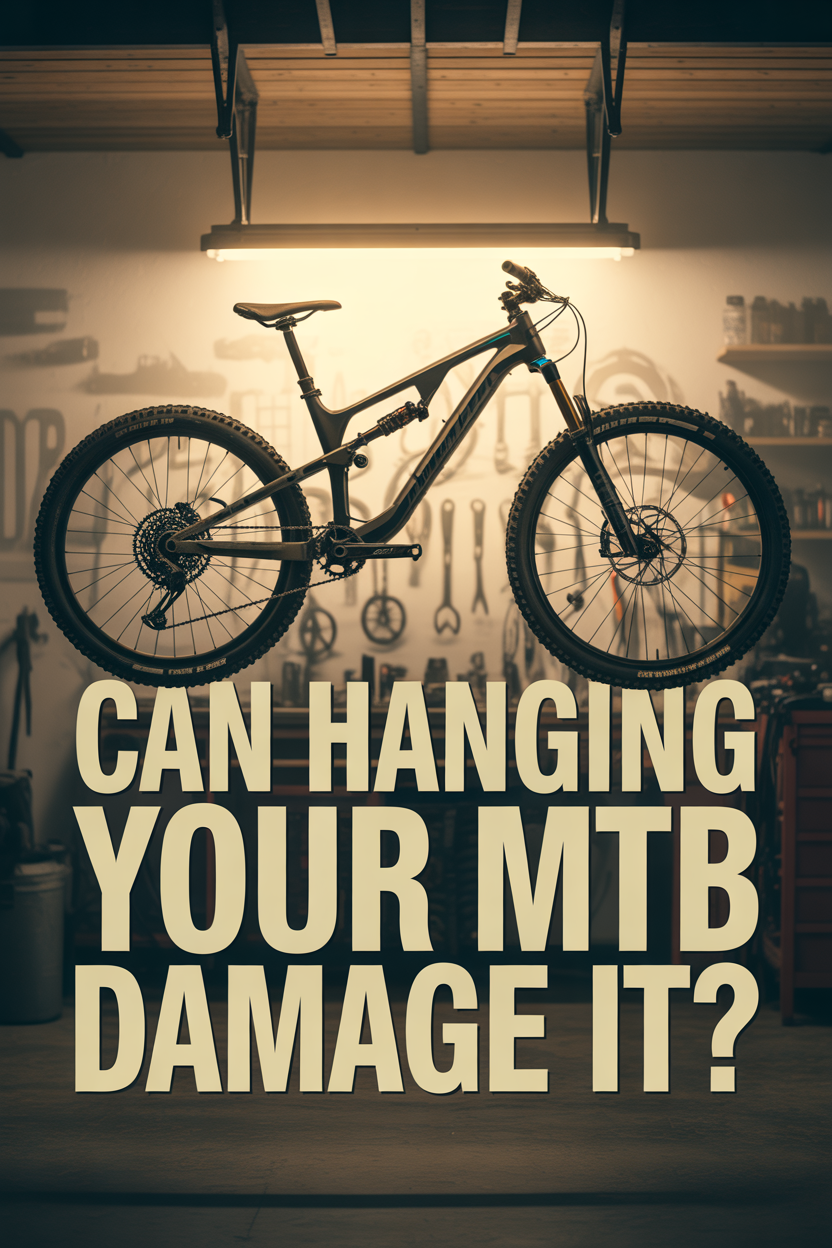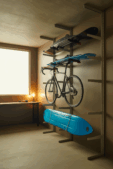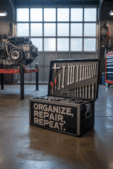Storing Mountain Bike Upside Down: Is It Safe or Risky?
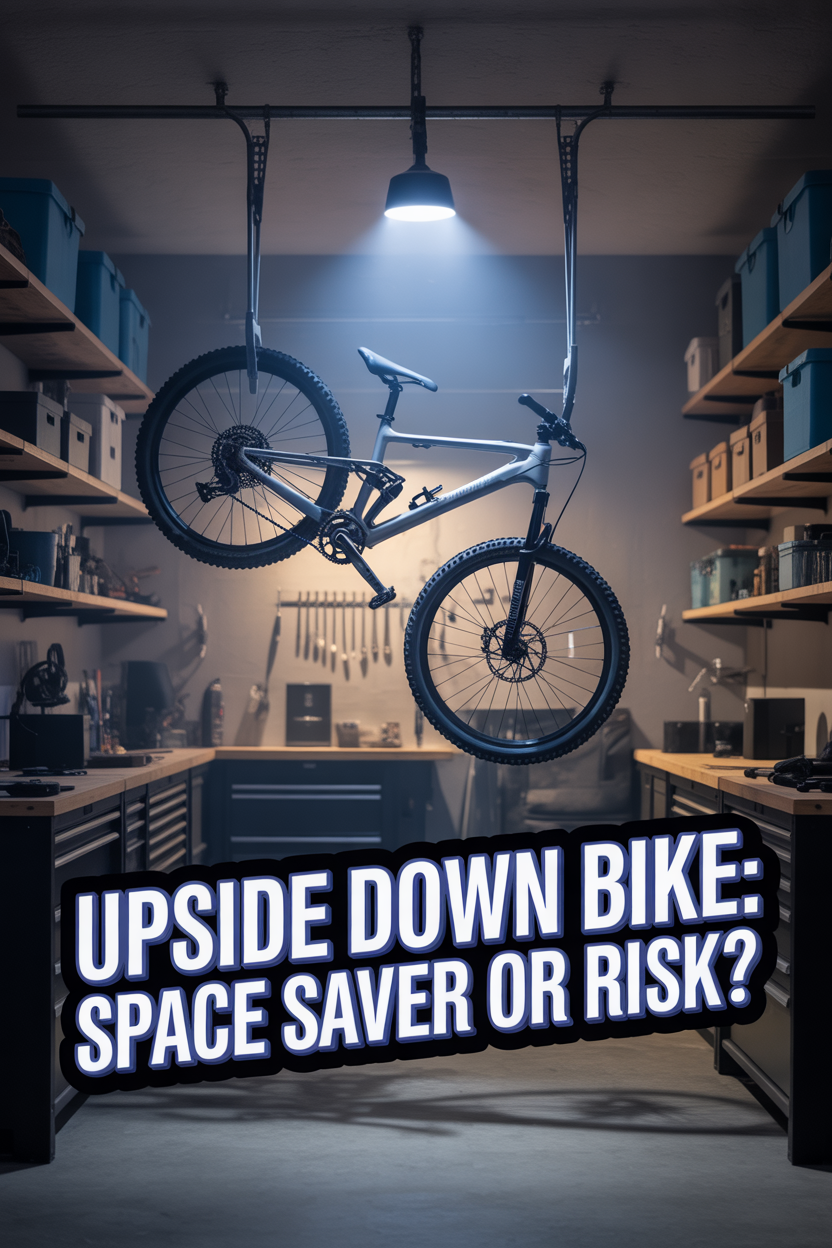
Your precious two-wheeled dirt machine is taking up valuable space in your already cramped living area, and you’re considering hanging it upside down. Should you flip that bike and hang it like a mechanical bat? Let’s explore the upside-down world of mountain bike storage – where gravity shifts and hydraulic fluids take unexpected journeys!
The Safety of Upside Down Bike Storage
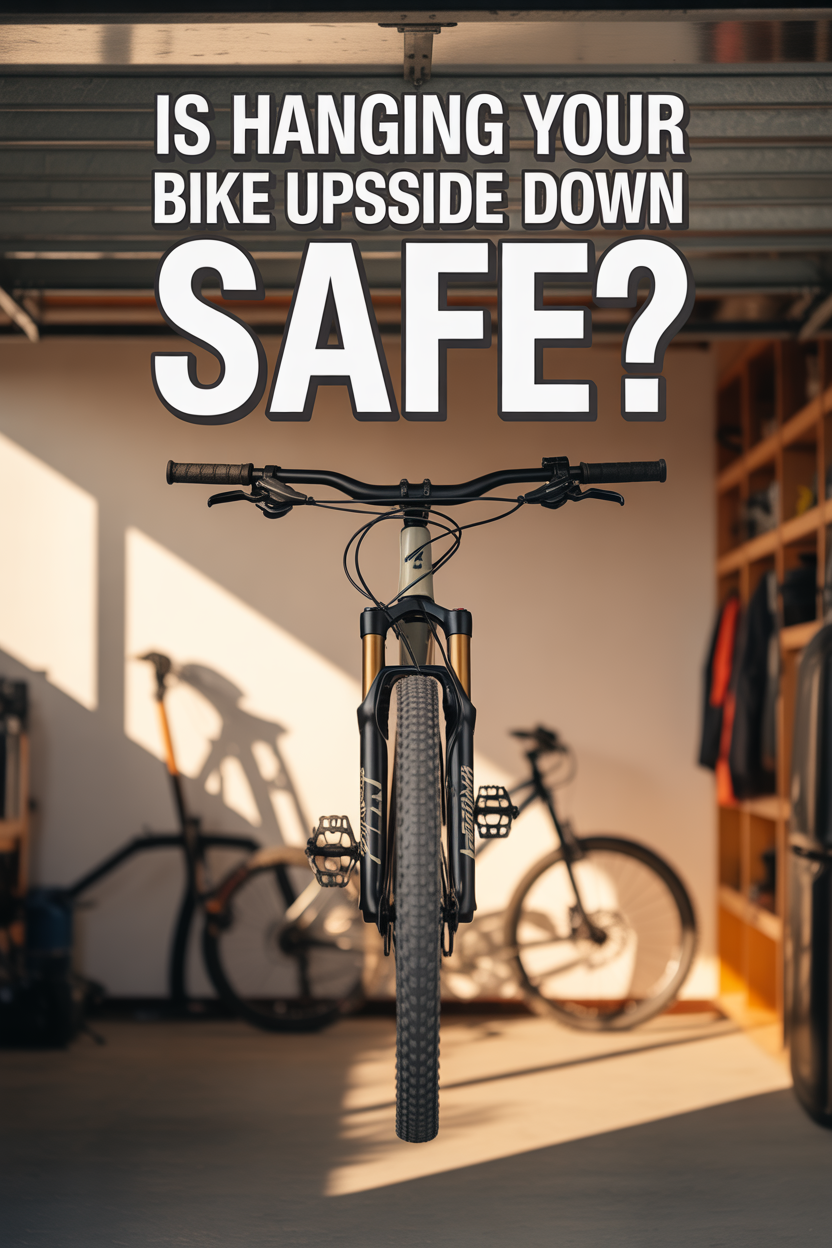
Storing your mountain bike upside down for a quick fix or overnight is usually fine for most bikes. It’s similar to doing a handstand for a minute – okay for a short time but not ideal as a permanent position.
Modern mountain bikes are engineering marvels with sophisticated hydraulic systems that generally prefer to remain right-side up. Their natural orientation allows fluids to stay where they belong.
Before flipping your bike, consider what components it has. A basic hardtail might handle being upside down well, while your high-end full-suspension bike with complex hydraulics might suffer from the inversion.
Understanding the Physics of Inverted Bike Storage
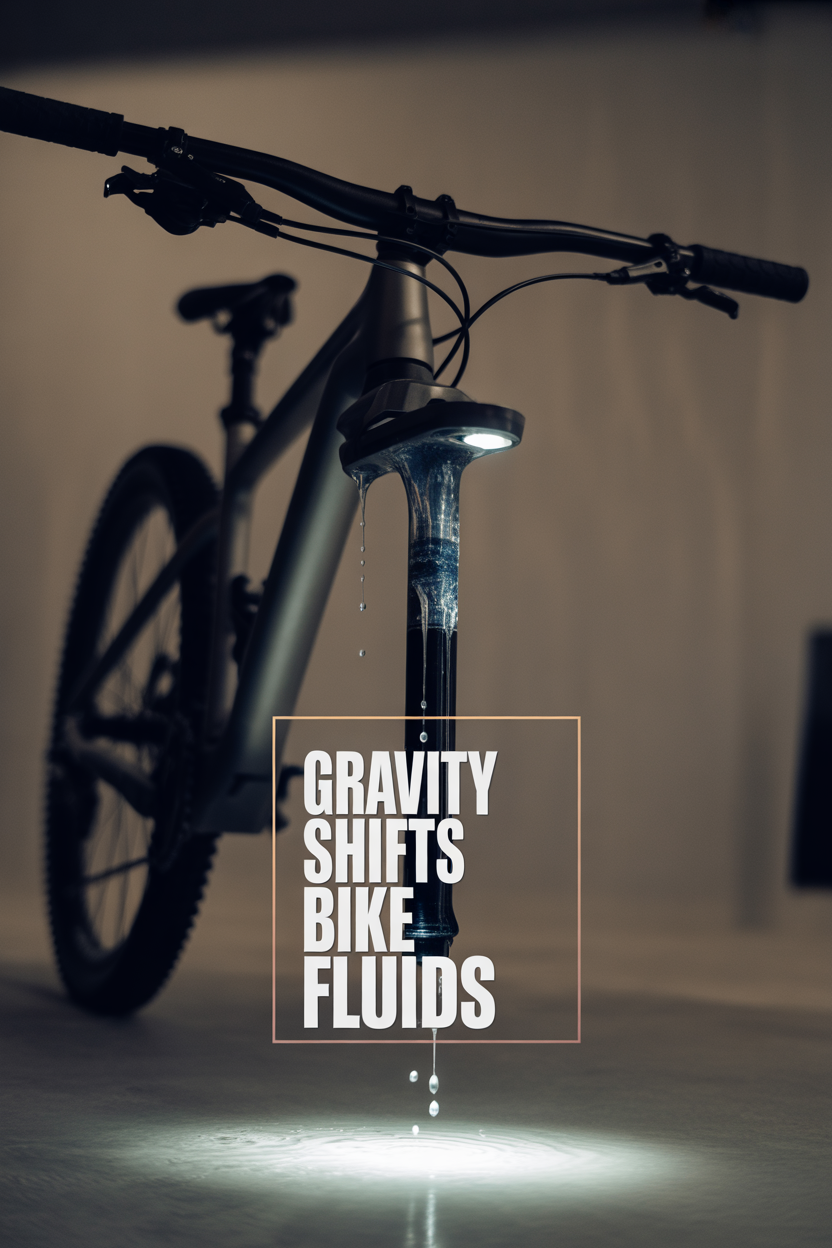
When you flip your bike, you’re essentially challenging gravity! All those carefully placed oils and lubricants suddenly move to areas of your bike they weren’t designed to occupy.
Imagine your suspension oil, normally positioned around the seals, migrating elsewhere. When you right the bike again, those seals might be momentarily dry, increasing friction and accelerating wear on critical components.
The natural design of most bike systems assumes a particular orientation, and changing this can disrupt the careful balance of fluids that keep everything running smoothly.
Hydraulic Brake Concerns
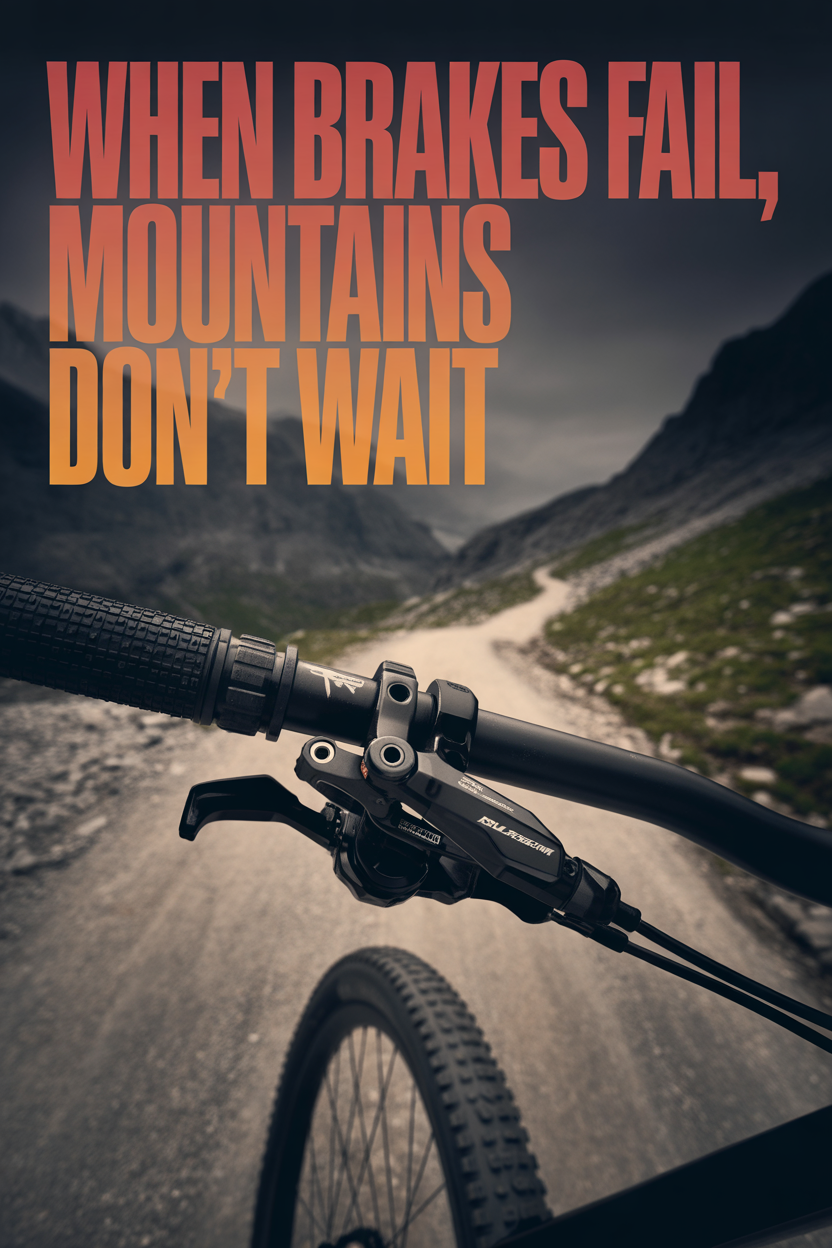
Hydraulic brakes are particularly sensitive to upside-down storage. These sophisticated systems rely on fluid being precisely positioned – with air bubbles kept away from critical areas.
When stored upside down, air bubbles can migrate through your brake system like explorers in new territory. The result? You might pull your brake lever on your first downhill and discover it feels spongy and unresponsive.
While newer brake systems are somewhat forgiving, older systems might require a proper bleeding after extended ceiling time. This maintenance task requires specific tools and knowledge that many riders prefer to avoid.
Suspension Component Reactions
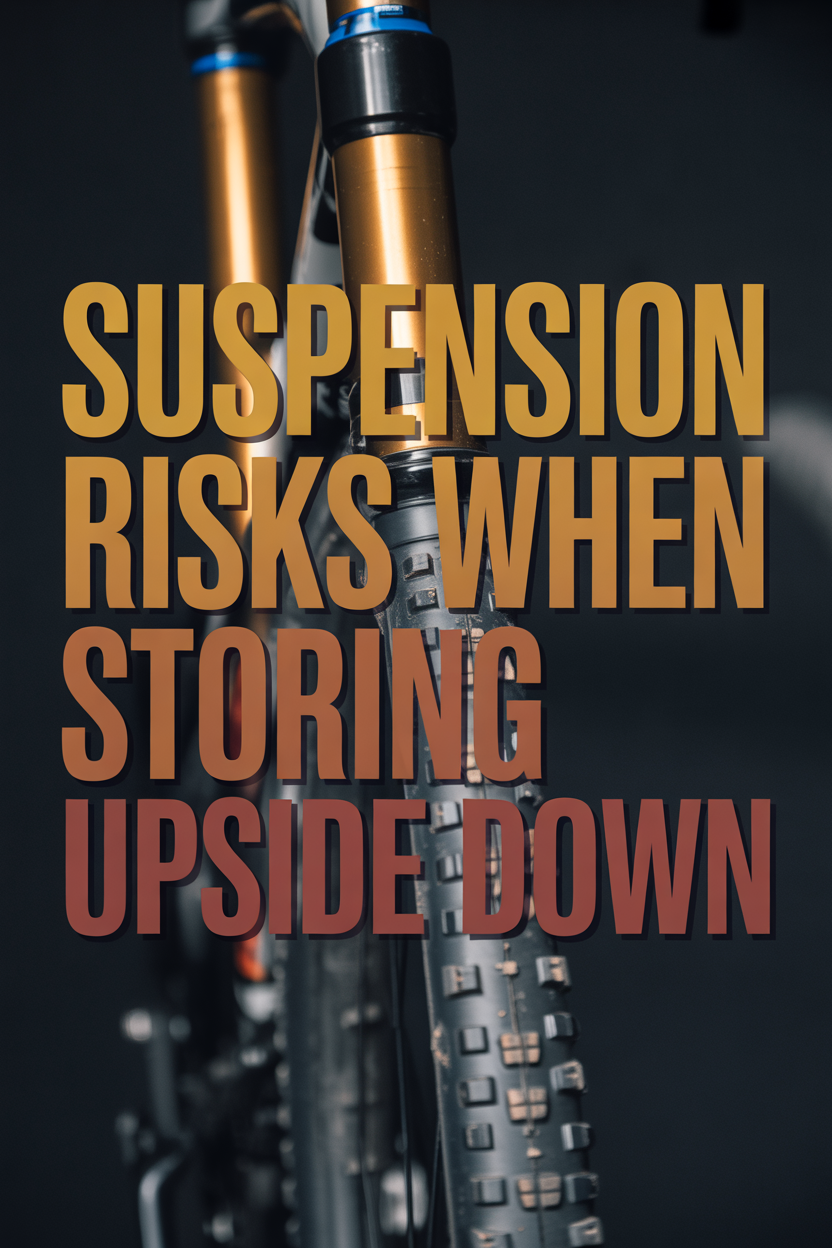
Your suspension components contain specialized oils designed to be in specific places. When your bike hangs upside down, these oils become displaced:
- Fork seals may lose their lubrication, leading to dry, squeaky operation
- Air can infiltrate oil chambers in your damper, creating rough suspension performance
- Air springs might push against seals from unintended angles, causing premature wear
Brief inversion for cleaning won’t seriously damage your suspension, but long-term inverted storage might accelerate component aging and require more frequent servicing.
Many riders notice subtle differences in suspension performance after their bikes have been stored upside down, particularly in the initial minutes of riding.
Dropper Post Problems
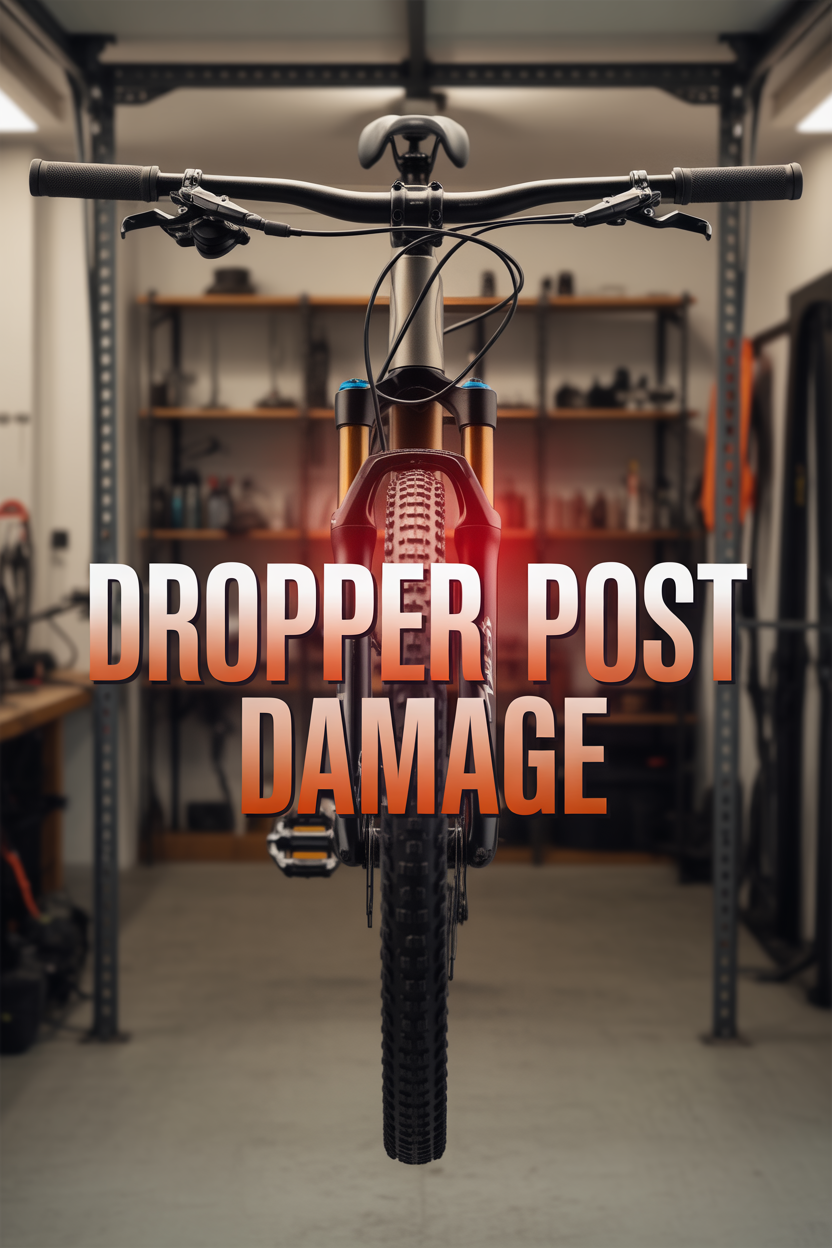
Dropper posts – those telescoping seat pillars we now consider essential – contain either hydraulics or air springs that can behave unpredictably when turned upside down:
- Hydraulic droppers may develop air bubbles, making them sluggish to respond
- Internal seals could miss their regular oil contact, creating increased friction
- Pressure might build in unintended areas, stressing internal components
Many cyclists report that after hanging upside down, their dropper posts need several compressions to function properly again. Some posts may even require professional attention if left inverted for extended periods.
Given the cost of quality dropper posts, protecting this investment should be a priority for any mountain bike owner.
Manufacturer Recommendations

Bike manufacturers provide clear guidance about storage positions in their manuals:
- Specialized recommends against flipping hydraulic-equipped bikes
- Trek allows inverted position for short periods only
- Fox specifically warns against upside-down storage for their suspension products
- SRAM cautions that hydraulic brakes perform best when kept in their natural position
The consensus among manufacturers is clear: brief periods upside down probably won’t immediately damage your bike, but they don’t recommend it as a regular storage solution.
These recommendations aren’t arbitrary – they come from extensive testing and warranty claim analysis that identifies common causes of component failure.
Space-Saving Storage Alternatives
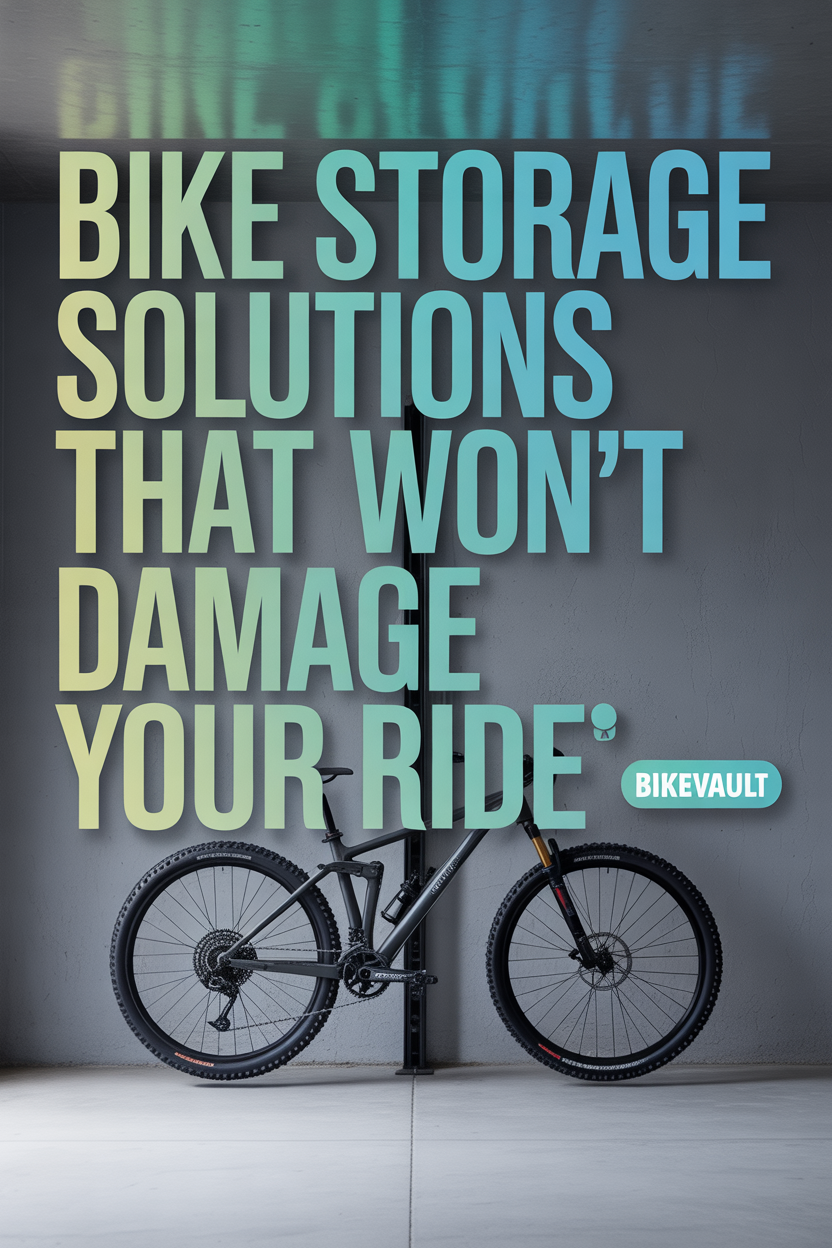
If your living space is limited, consider these space-efficient alternatives that keep your bike in a more natural position:
- Vertical storage mounts that allow the bike to stand upright against a wall
- Under-bed storage systems that utilize often-wasted space
- Foldable bike stands that can be tucked away when not in use
- Pulley systems that lift bikes horizontally to ceiling level
- Bike-friendly furniture designed with integrated storage solutions
These options maintain your bike in a more natural position while still helping you reclaim valuable floor space in your home.
Many of these solutions are relatively affordable and can be installed without permanent modifications to your living space.
Comparing Storage Mount Options
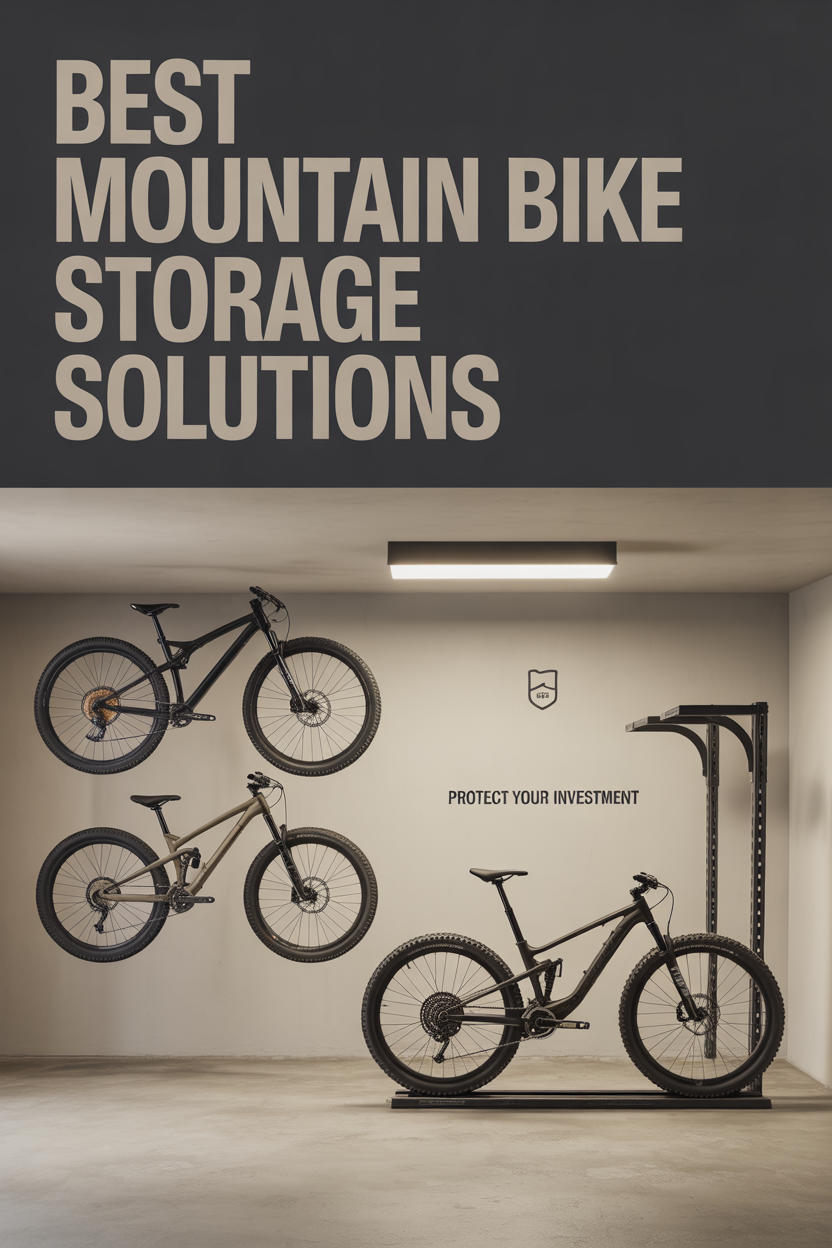
Let’s evaluate the main storage options available to mountain bike owners:
Wall Mounts:
- Advantage: Transforms your bike into decorative wall art
- Advantage: Securely holds your bike in a stable position
- Disadvantage: Requires drilling and locating wall studs
- Disadvantage: Some bike geometries don’t fit standard mounts well
Ceiling Hooks:
- Advantage: Utilizes often unused ceiling space
- Advantage: Generally less expensive than specialized stands
- Disadvantage: Requires strength to lift bikes into position
- Disadvantage: Some systems still require inverting the bike
Floor Stands:
- Advantage: Fully portable with no permanent installation needed
- Advantage: Provides easy access for frequent riders
- Disadvantage: Occupies valuable floor space
- Disadvantage: Quality stands can be relatively expensive
Short-Term Upside Down Storage Tips
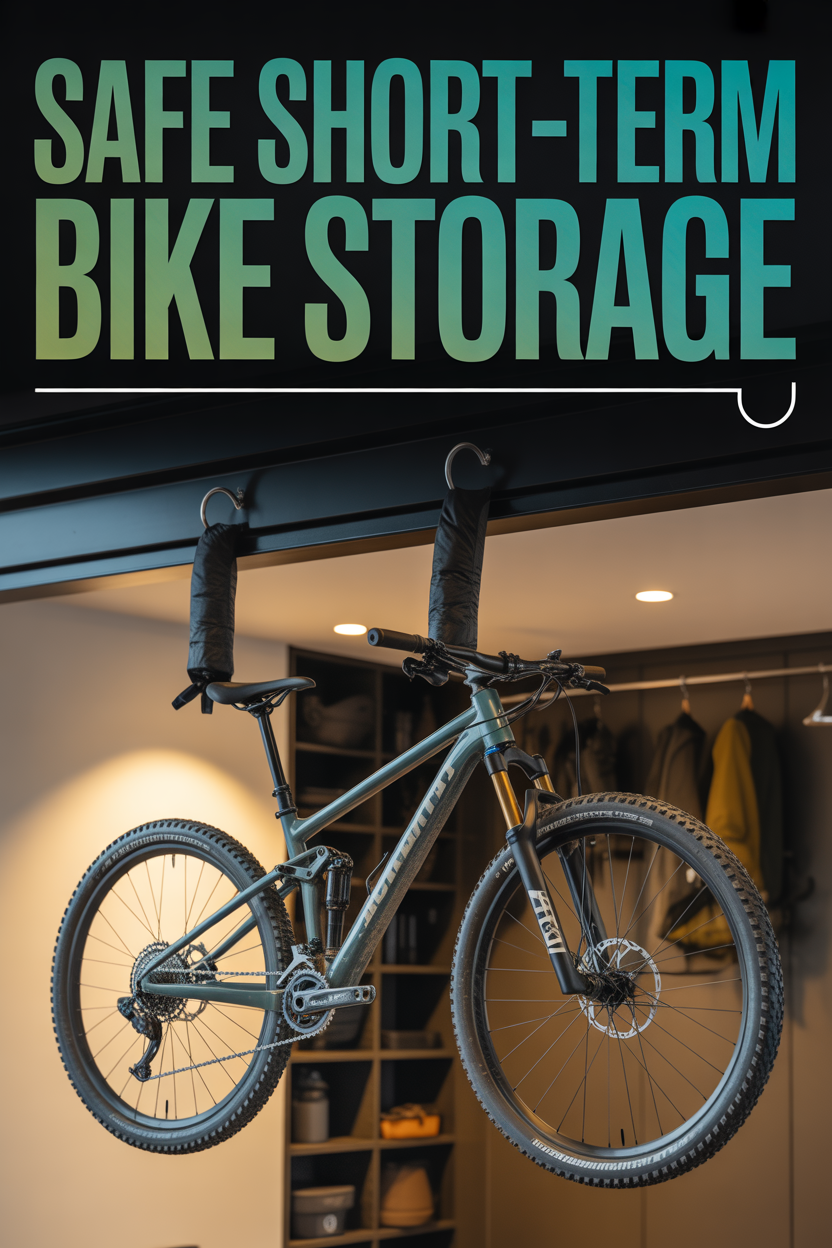
If hanging your bike upside down is your only option for brief periods, follow these guidelines to minimize potential issues:
- Ensure your brakes are in excellent condition before inverting
- Consider releasing suspension pressure for longer storage periods
- Use padding to protect handlebars and saddle from wall damage
- Lower your dropper post completely before hanging
- After returning the bike to upright position, cycle all components through their range of motion several times
These precautions won’t eliminate all risks, but they can significantly reduce the likelihood of performance issues when you return to riding.
Remember that newer bikes with well-maintained hydraulic systems tend to tolerate brief inversions better than older models.
Long-Term Storage Precautions
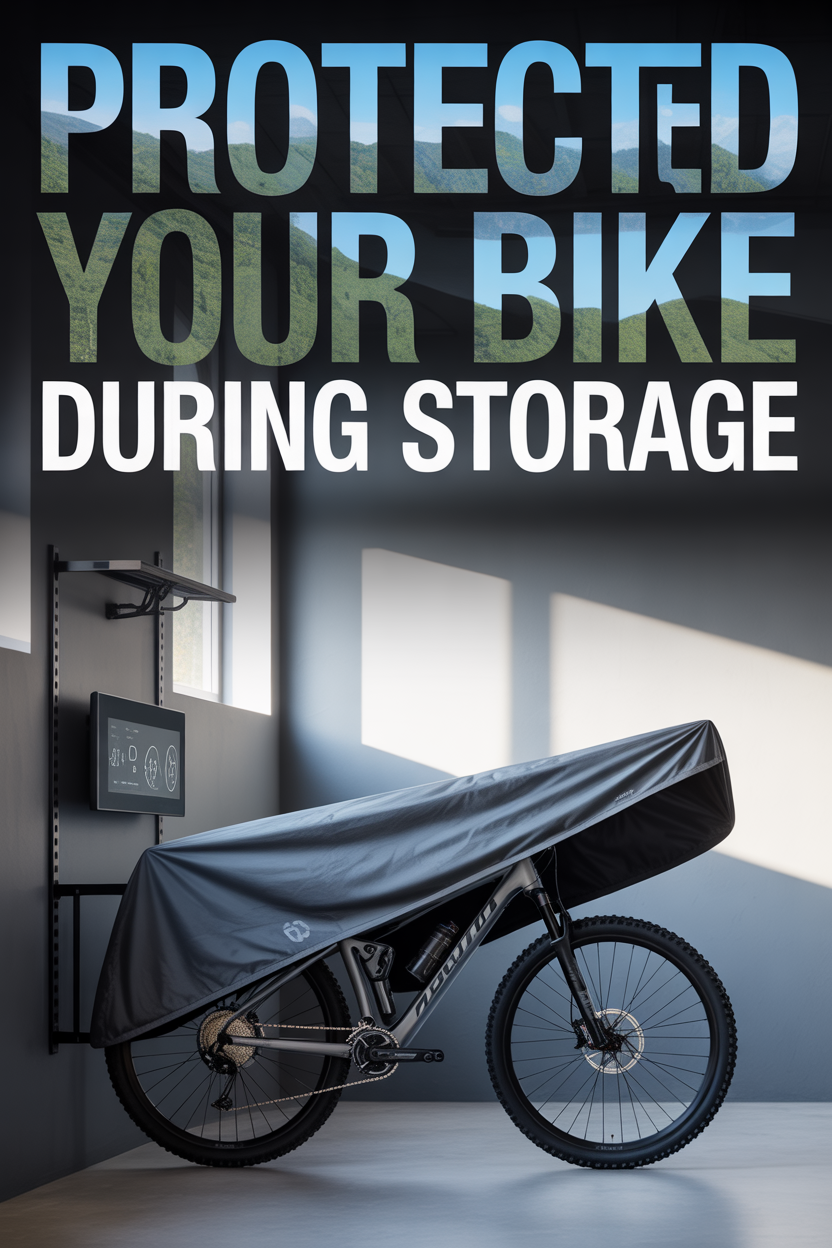
For storage lasting several weeks or months, avoid upside-down positioning. Instead:
- Keep the bike upright or at least sideways whenever possible
- Clean the drivetrain thoroughly before storage
- Reduce tire pressure by about 50% to prevent flat spots
- Remove e-bike batteries and store them separately in climate-controlled conditions
- Use a breathable cover to protect from dust accumulation
- Choose a storage location with consistent temperature and humidity levels
These practices help preserve your bike’s performance characteristics even during extended periods of non-use.
Proper long-term storage significantly reduces the maintenance needs when you’re ready to resume riding.
Preparing Bikes for Unavoidable Inverted Storage
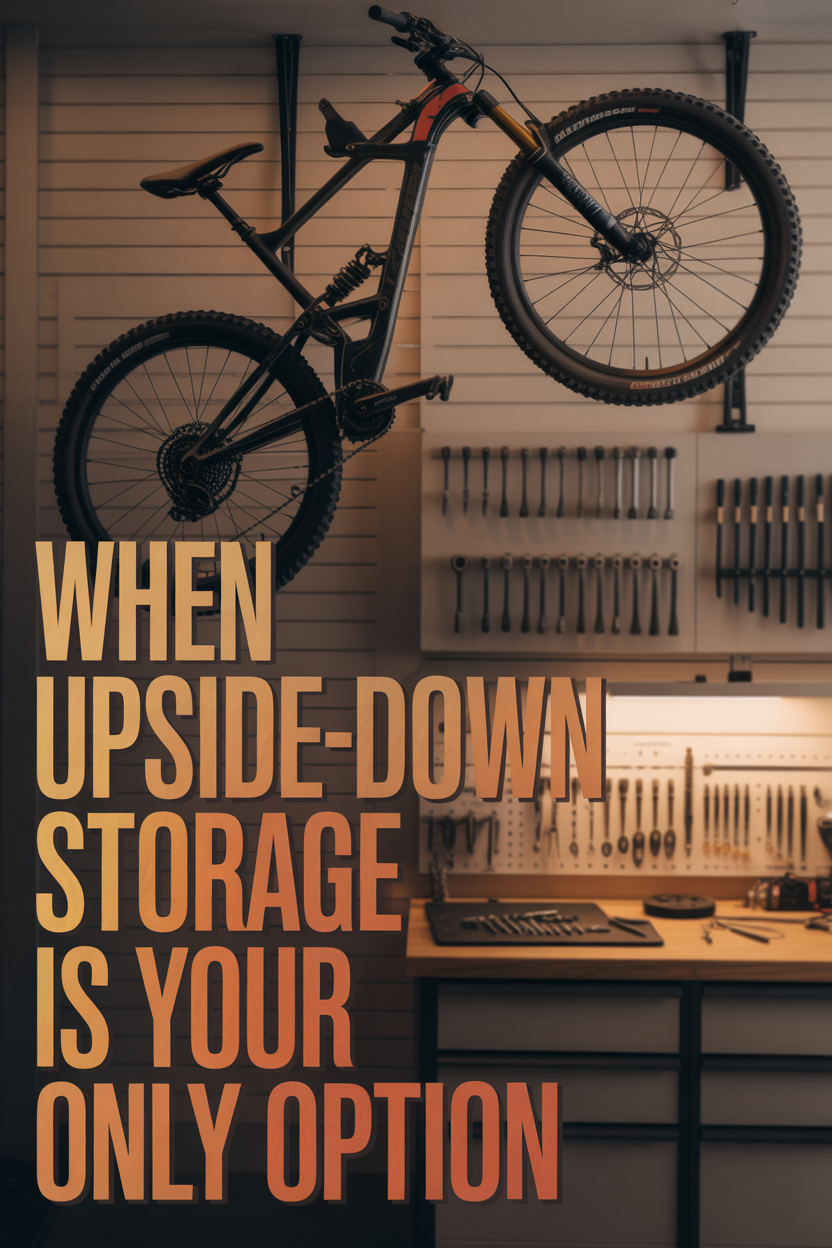
If your bike absolutely must hang upside down for an extended period, take these extra precautions:
- Have your brakes professionally bled to ensure they’re completely free of air bubbles
- Service suspension components to establish proper oil levels
- Remove accessories that might fall off or be damaged
- Clean all components thoroughly before hanging
- Consider removing the dropper post entirely and storing it separately
- Add protective padding to all contact points
These steps won’t eliminate all risks associated with inverted storage, but they can substantially reduce the likelihood of serious issues developing.
The investment in preparation is typically much less than potential repair costs if problems arise later.
Post-Storage Maintenance Checklist
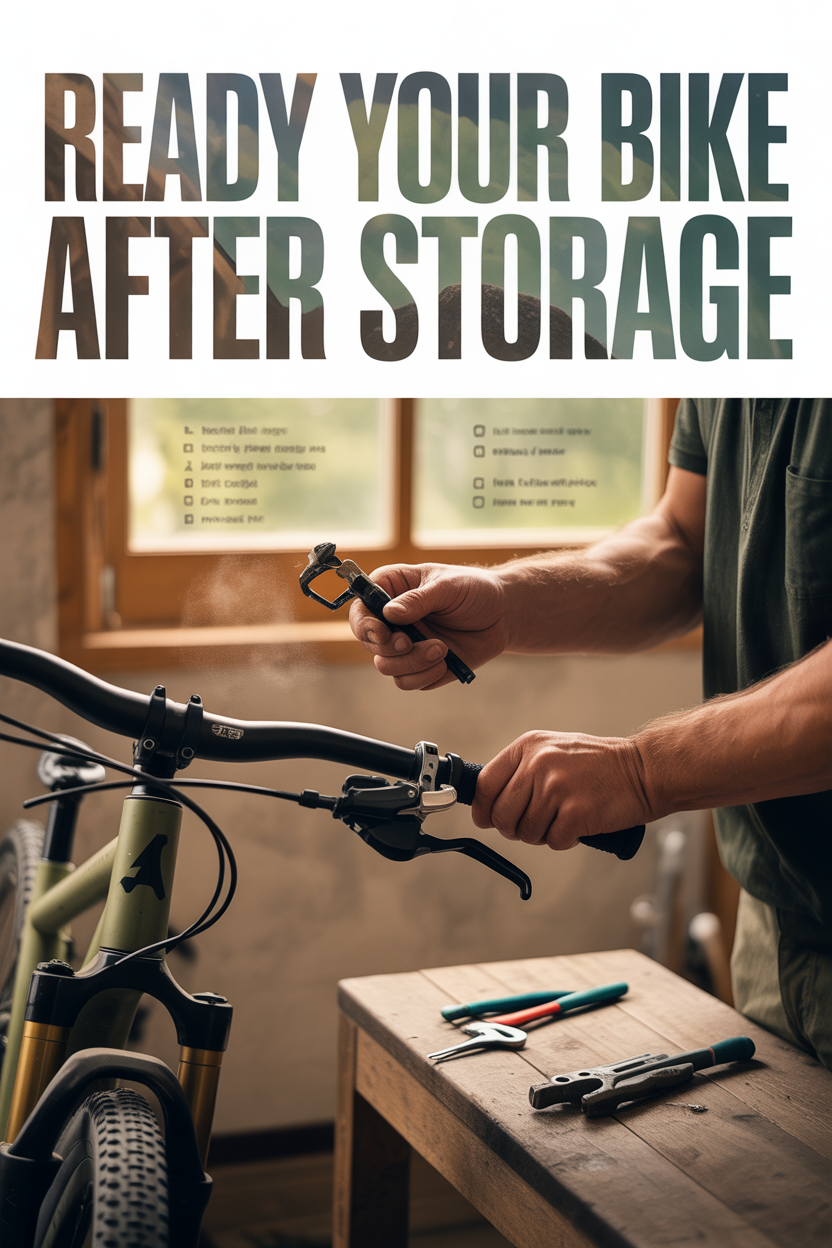
Before riding a bike that’s been stored upside down, perform these important checks:
- Squeeze brakes repeatedly to ensure they feel firm and responsive
- Cycle suspension fully through its travel range several times
- Operate the dropper post through its complete range of motion
- Check and adjust tire pressure to riding specifications
- Inspect for fluid leaks around all seals
- Test shifting across all gears to verify smooth operation
- Take a test ride in a safe area before attempting technical terrain
This systematic approach helps identify any issues that may have developed during storage before they create safety hazards on the trail.
Consider a full bike inspection by a professional mechanic if the bike has been stored inverted for several months.
Storage Solutions for Different Living Situations
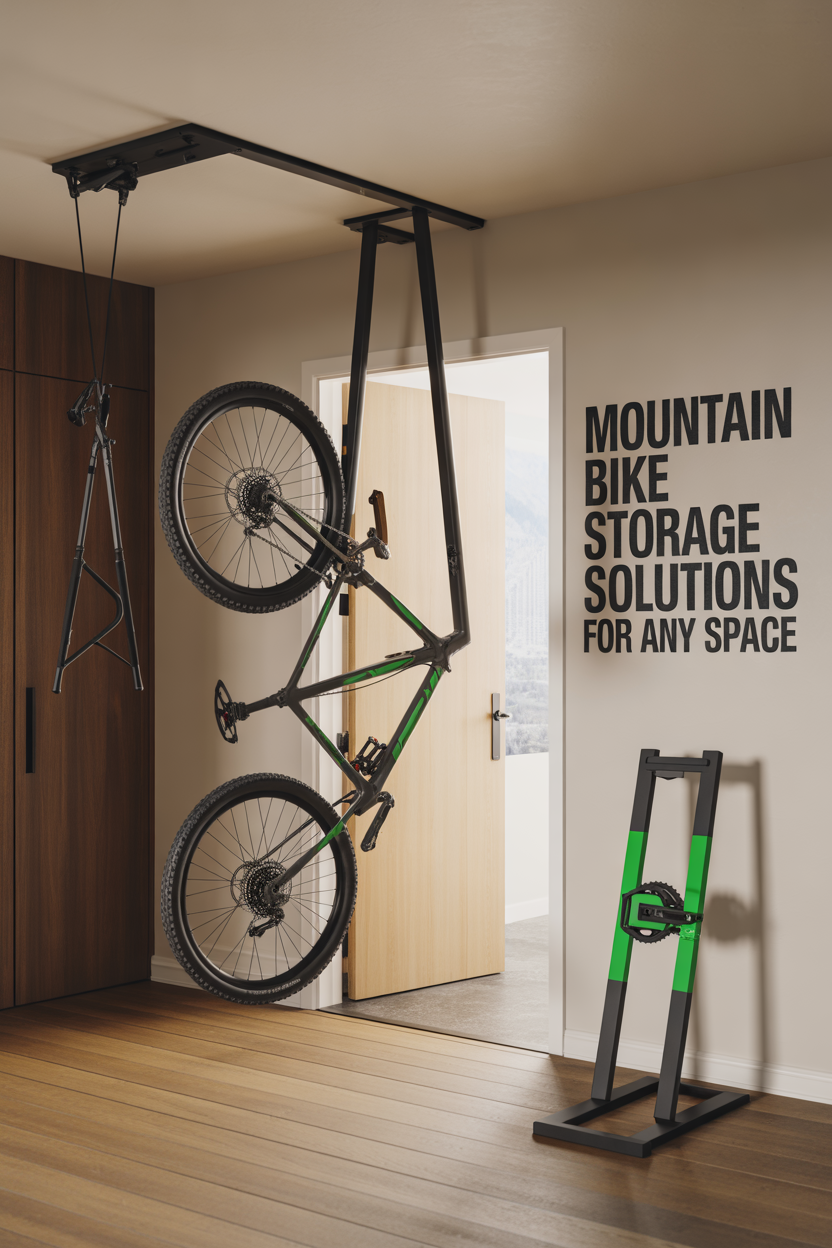
For Apartment Dwellers:
- Tension-mounted vertical stands that don’t require wall modifications
- Over-the-door hooks that maximize use of existing structures
- Furniture pieces designed with integrated bike storage features
For Home Owners:
- Ceiling pulley systems that lift bikes horizontally overhead
- Wall-mounted racks in dedicated storage spaces
- Multi-bike floor stands for collections of several bicycles
For Dorm Residents:
- Under-bed storage systems that utilize vertical space
- Compact vertical stands with minimal footprints
- Shared secure bike storage facilities where available
The best solution depends on your specific living situation, budget, and how frequently you need to access your bike.
When Upside Down Storage Is Acceptable
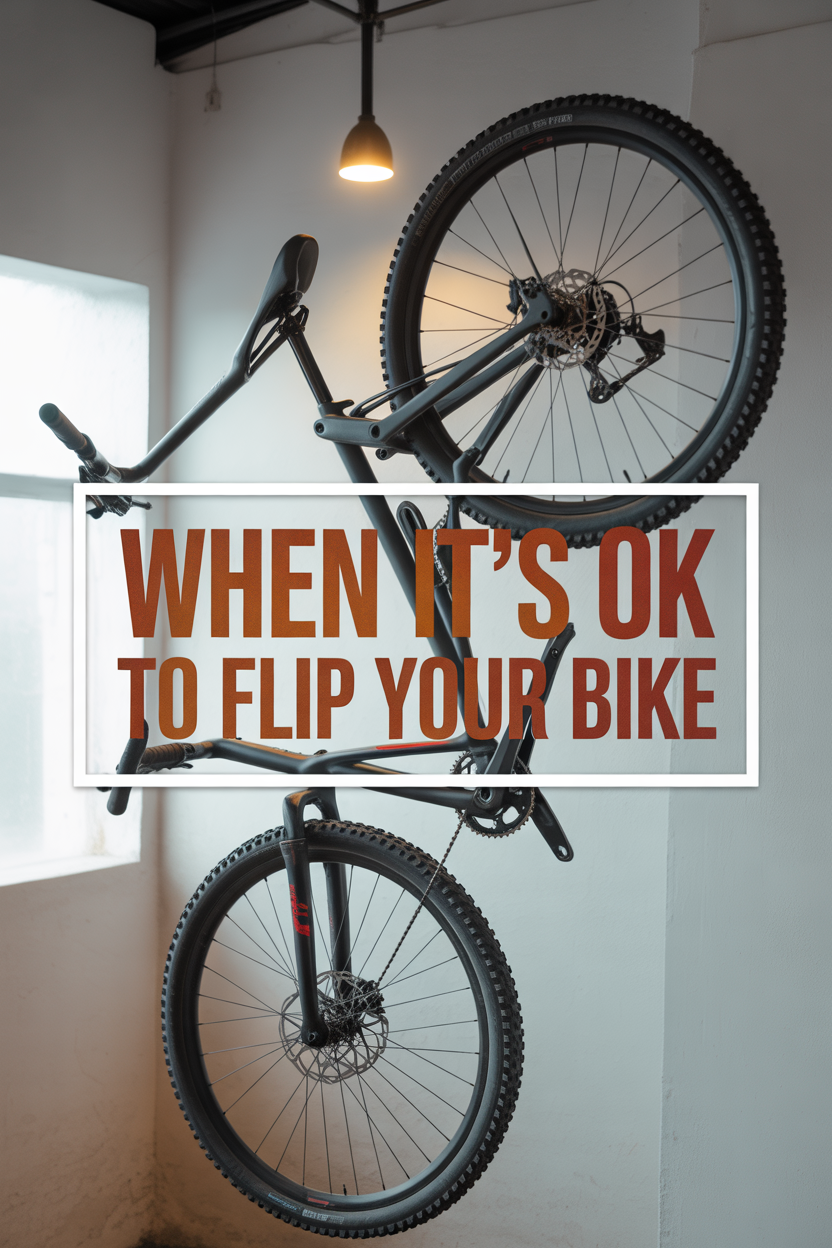
Inverting your mountain bike is generally acceptable in these specific scenarios:
- For brief maintenance periods when making quick repairs
- During cleaning routines where access to the underside is needed
- For simpler bikes with minimal hydraulic components
- In temporary emergency situations with no alternatives
However, avoid upside-down storage for:
- Long-term storage extending beyond a few days
- Bikes with aging hydraulic brake systems
- Full-suspension bikes with complex damping circuits
- Bikes equipped with sophisticated dropper posts
While modern mountain bikes can handle remarkable abuse on trails, their complex systems generally prefer to remain right-side up when at rest. The minor inconvenience of finding proper storage is typically less problematic than dealing with hydraulic systems that have been compromised by prolonged inversion.
Your mountain bike represents a significant investment in both money and enjoyment. Storing it properly ensures it remains ready for adventure whenever you are, with minimal maintenance surprises to delay your next ride.


